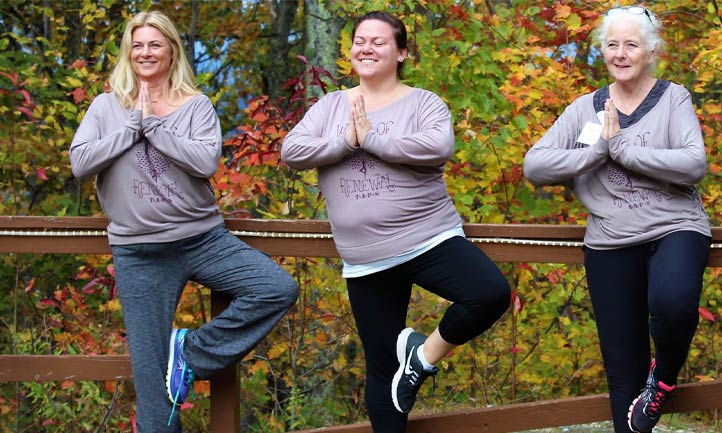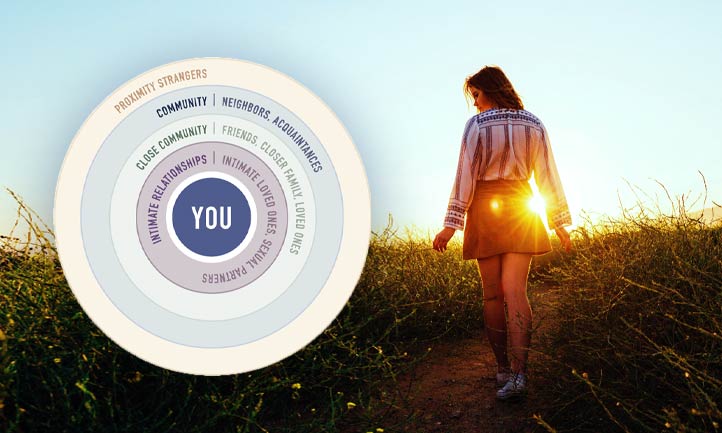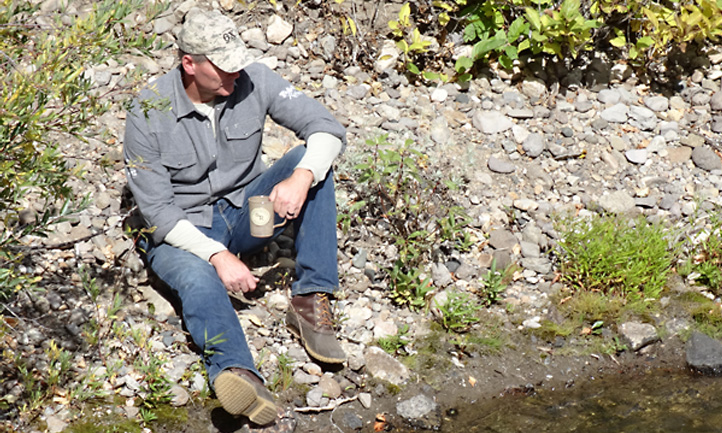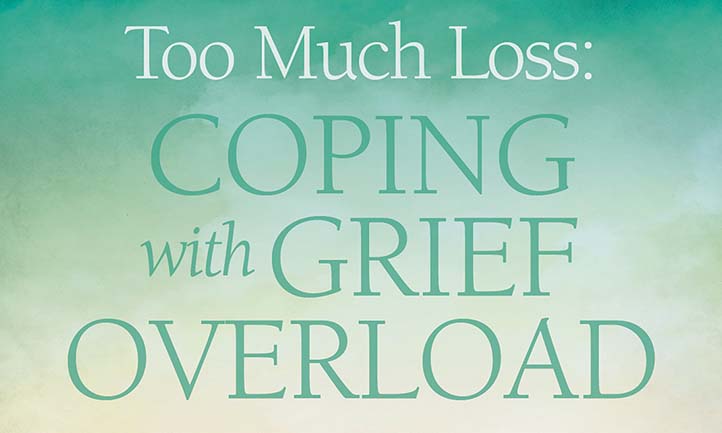October is Emotional Wellness Month
Author: TAPS
This article was first published on the TAPS website on October 1, 2021 and has been updated with additional resources.
As members of the TAPS family, we either know (or are learning) that even in the midst of heartache, we can find moments of comfort and connection. It doesn’t always come naturally - it isn’t easy to balance the needs of grieving and living. Yet, when we’re navigating major life transitions, or experiencing periods of intense grief and pain, we’re often most aware of how much we need care, strength, and support. We are reminded how important it is to feel well - to feel capable, aligned, and at ease.
In the midst of grieving, it can be difficult to even consider what it might be like to feel “well” again. It can be difficult to access the skills we used to help us function, find purpose, and feel valued. And yet, during these times of extreme discomfort, we are building our own resilience.
 Photo: Danilo Ćalić, Unsplash.com
Photo: Danilo Ćalić, Unsplash.com
Emotional Wellness Strategies
There are many strategies for understanding how we can build our own emotional wellness, including six that make up this toolkit from the National Institute of Health. You will find many of these strategies form the backbone of what we do at TAPS - staying connected, building networks of support, asking for and accepting help, managing stress, and coping with loss.
The way we feel affects our relationships, our overall mental health, and our ability to carry out everyday activities. Yet, we are able to build capacity, so that we can feel more confident and comfortable in our emotional “home.” Part of emotional wellness is, actually, understanding that we interact with feelings and name them, but we don’t have to take them on or become them. The shift is subtle, yet important: you don’t have to own “I’m angry,” but you can own “I am feeling anger.” You don’t have to define yourself as “I’m lonely,” but you can experience loneliness.
Naming emotions helps us bridge the gap between thoughts and feelings and also helps us remember that we are not any one emotion exclusively. We are always greater than what we are feeling at any one moment.
Learning to recognize, define, and describe our emotions is one of the ways that we can start to become more aware of what’s happening in our emotional landscape. At Women’s Empowerment retreats, we sometimes call this the “emotional weather report:” Do you feel foggy or unclear? Is a storm coming? While these are mainly descriptive words, thinking about emotions similarly to how we think of the weather can help us understand that emotions are not permanent. This can lead us into a deeper understanding of what the feelings actually are, so that we can process and express them. We cannot manage what we don’t notice - or what we cannot identify.
Interested in learning more about emotions? Here’s an interesting resource called Plutchik’s Wheel of Emotions. We would also like to refer you to Dr. Gloria Willcox’s original Feeling Wheel, a tool used to identify, express, generate, and change feelings.
Research indicates that the raw intensity of emotions seems to dissipate when we are able to name them for what they are - which means that next we can engage with all emotions differently, and use them to feel empowered rather than disenfranchised. Reintroducing choice, balance, and purpose can help even moments of extreme discomfort feel less overwhelming.
Practice asking questions of yourself like:
- Can I hold this emotion without judgment?
- What is this emotion trying to tell me?
- How can I express this emotion?
- What is my next best action? Can I balance this emotion with others?
- How does this feeling relate to other parts of my emotional well-being? (i.e., fatigue, negative outlook, etc.)
Awareness and acceptance of emotions in yourself and others is just one way that we can reconnect some of the circuits that help us feel like we are more capable and resilient. Other ways include mindfulness practices, increasing the quality of sleep, and stress reduction practices. Which areas do you feel most confident in? Which could use some attention?
Remember that emotional wellness is not incompatible with grief. It is not about not having difficult emotions; but, about understanding how these emotions are part of our whole selves and our larger experiences.
TAPS Wellness Resources
TAPS has a number of Health & Wellness articles, resources and webinars available on our website.
Connect with your TAPS Family through upcoming events, chats and care groups meetings. Visit the TAPS Event Calendar to learn more.
Emotional Awareness
A Look at Loneliness
Dr. Alan Wolfelt
Begin to understand your degree of loneliness and get tips for finding ways past your loneliness with this helpful guide.
Good vs. Bad Pain
Emily Muñoz
Pain can be a valuable teacher. But as much as we may learn from it, we may also feel compelled to avoid it.
Open Your Heart to Healing
Emily Muñoz
Nine unique ways to change your perspective from one of grief and loss to one of hope and engagement.
Healthy Habits
Choosing Wellness
Eileen T. O’Grady, PhD, NP-BC
This video recording shares how to practice self-leadership, form habits that serve us, and practice extreme self-care, no matter your circumstances.
Grief and Sleep
Heather Stang, MA, C-IATY
Your sleep is important to your healing, not only physically but emotionally too. Learn 7 tips to cope with insomnia after loss.
Finding Rest when Stressed
Heather Stang, MA, C-IATY
This video recording of a TAPS Talks connection discusses helpful ideas and tips to promote better sleep.
Coping With Loss
Techniques to Lessen Anxiety and Build Resilience
Neil Goodman, LMT
Children’s Bereavement and Emotional Wellness
Andrea Hug, MaPC, MPS, LCPC
Five Practical Tips to Reduce Anxiety, Calm Fear
Dr. Alan Wolfelt
Mindfulness In Everyday Life
Tending the Garden of Grief with Mindfulness Meditation
Heather Stang, MA, C-IATY
5 Ways for the Bereaved to be Mindful
Heather Stang, MA, C-IATY
Wellness Techniques for Reducing Stress and Anxiety
Neil Goodman, LMT













